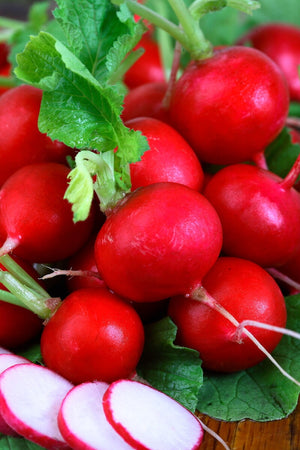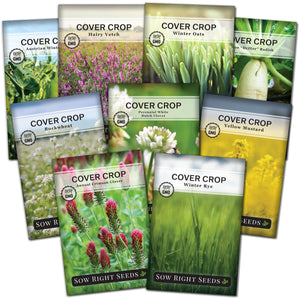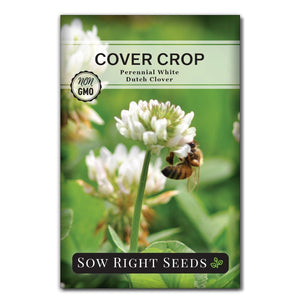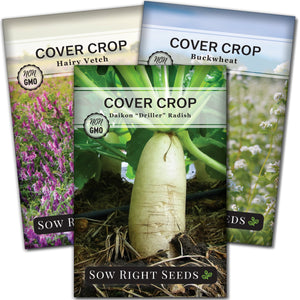Topics
Maximizing Soil Health: Uncovering the Best Cover Crops for Raised Beds
Cover crop growing tipsIf you’re a fan of raised garden beds, you know about filling them with the best soil possible. Once you’ve gone through the trouble of creating extraordinary garden soil, you want to keep it that way. Using cover crops in raised beds will help create and maintain fertile garden soil.

Benefits of Cover Crops in Raised Beds
Cover crops offer numerous benefits when incorporated into raised beds. Firstly, they help improve soil fertility by fixing nitrogen, a vital nutrient for plant growth. Legumes such as clover and vetch are excellent nitrogen fixers, making them ideal cover crops for raised beds.
Secondly, cover crops act as living mulch, protecting the soil from erosion caused by heavy rain or wind.
Additionally, cover crops help suppress weeds by out-competing them for space, light, and nutrients. This reduces the need for manual weeding or the use of herbicides, making raised bed gardening more sustainable.
Lastly, cover crops improve soil structure by increasing organic matter content, enhancing water retention, and promoting beneficial microbial activity. These benefits work together to create a healthy and productive growing environment in your raised beds.
Types of cover crops for raised garden beds
Legumes/Clover: Nitrogen-Fixing Powerhouses
Leguminous cover crops, such as crimson clover, hairy vetch, and Austrian winter pea, work wonders in raised beds. These plants have a unique ability to fix nitrogen from the atmosphere into the soil, enriching it naturally.
Benefits:
Nitrogen Fixation: Legumes form symbiotic relationships with nitrogen-fixing bacteria in their root nodules. Through this process, they convert atmospheric nitrogen into a usable form for plants, boosting the soil's fertility without synthetic fertilizers.
Improved Soil Structure: As legumes grow, their extensive root systems penetrate the soil, breaking up compacted areas and enhancing its structure. This increases water and nutrient retention, benefiting subsequent crops.
Weed Suppression: Fast-growing leguminous cover crops create a dense canopy that effectively suppresses weed growth, reducing the need for tedious weeding in your raised beds.
Grasses/Grains: Erosion Fighters and Nutrient Recyclers
Grass cover crops, including winter rye and winter oats, offer a range of benefits to raised bed gardening.
Benefits:
Erosion Control: In raised beds, where soil can be more exposed, grass cover crops play a crucial role in preventing erosion caused by heavy rain or strong winds.
Nutrient Recycling: Grasses have extensive root systems that reach deep into the soil, scavenging nutrients that might otherwise be lost to leaching. When these cover crops are cut and left on the bed's surface, they slowly decompose, releasing the nutrients back into the soil for other plants to use.
Organic Matter Enhancement: As grass cover crops break down, they add valuable organic matter to the soil, boosting its overall health and fertility.
Brassicas/Broadleaves: Natural Pest Controllers and Soil Conditioners
Brassica cover crops, such as yellow mustard and daikon driller radish, offer unique benefits to raised beds.
Benefits:
Biofumigation: Brassicas contain compounds that, when broken down, release natural biofumigants. These biofumigants suppress soil-borne pests and pathogens, effectively acting as a natural pest control measure.
Soil Aeration: With their deep taproots, brassica cover crops effectively aerate the soil, improving its structure and allowing for better water and oxygen penetration.
Nutrient Accumulation: Brassicas have a remarkable ability to scavenge nutrients from deep within the soil and accumulate them in their tissues. Once incorporated back into the bed's soil, these nutrients become available to other plants.
Cover Crop Seeds for Raised Beds
Sow Right Seeds has a variety of cover crops to choose from for your specific garden soil needs. Our packets come with enough seed to cover a 4-foot by 8-foot garden bed.
How to choose a cover crop
When choosing cover crops for your raised beds, several factors need to be considered to ensure success. The first factor is the time of year. Different cover crops thrive in different seasons, so selecting crops that align with your region's climate and growing seasons is essential.
The second factor is the specific needs of your raised bed. Are you looking to improve nitrogen levels, suppress weeds, or add organic matter to the soil? Identifying your goals will help you select the most appropriate cover crop for your raised beds.
Lastly, consider the space available in your raised beds. Some cover crops, like buckwheat, grow quickly and can be sown in between main crops during gaps in the growing season. Other cover crops, such as perennial grasses, require a long-term commitment and may not be suitable for small raised beds. By considering these factors, you can make an informed decision and choose cover crops that will thrive in your raised beds.
Best cover crops for improving soil health in raised beds
Now that you understand the benefits of cover crops and have considered the factors involved in choosing the right ones for your raised beds, let's explore some of the best cover crops for improving soil health.
One of the most popular cover crops for raised beds is crimson clover. This legume not only fixes nitrogen but also adds vibrant color to your garden. It grows quickly and can be sown in both spring and fall.
Another excellent choice is winter rye, a grass cover crop that suppresses weeds and protects the soil from erosion during the winter months. Winter rye is hardy and can withstand cold temperatures, making it a versatile option for raised beds in various climates.
For gardeners looking to add organic matter to their soil, consider planting oats as a cover crop. Oats produce lush foliage that can be easily incorporated into the soil, improving its structure and nutrient content.
These are just a few examples of cover crops that can help maximize soil health in your raised beds. Experiment with different combinations to find what works best for your specific needs.

Planting cover crop seeds in raised beds
Planting seeds for cover crops is different than seed starting for other crops. To plant cover crop seeds, sprinkle the seeds over the whole garden bed. Much in the same way you would spread grass seed on your lawn. Our seed packets hold the right amount of seed for a 4’ x 8’ bed.
Once the seeds are distributed, cover them with soil for a planting depth of ¼ to ½ inch. If seeds are planted too deeply, they won’t be able to push up through the soil. For specific planting directions, check the seed packet.
Utilizing cover crops as green manure in raised beds
As the cover crops mature, they will eventually need to be harvested or terminated before planting your main crops in the raised beds. The timing of this process depends on the specific cover crop and its growth habit. For legumes, wait until the plants start to flower before cutting them down. This ensures that nitrogen fixation has occurred, maximizing the nutrient contribution to the soil. Grass cover crops can be terminated by mowing or using a garden tiller.
After termination, allow the cover crop residue to decompose for 2 to 4 weeks before planting your main crops. This will provide time for the organic matter to break down and release nutrients into the soil. You can also incorporate the cover crop residue directly into the soil to speed up decomposition and improve soil structure.
By harvesting and utilizing cover crops effectively, you can maximize their benefits and prepare your raised beds for the next growing season.

Cover crops have been used by large-scale farmers for years. Now the benefits can be reaped by the home gardener too. With our convenient-sized seed packets, you can grow cover crops in your raised garden beds as well as in-ground.
Order your cover crop seeds today and start improving your garden soil.
Found this information helpful? Share it with your gardening friends!










Leave a comment